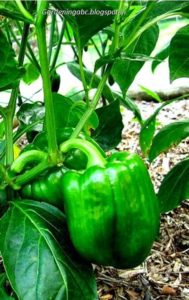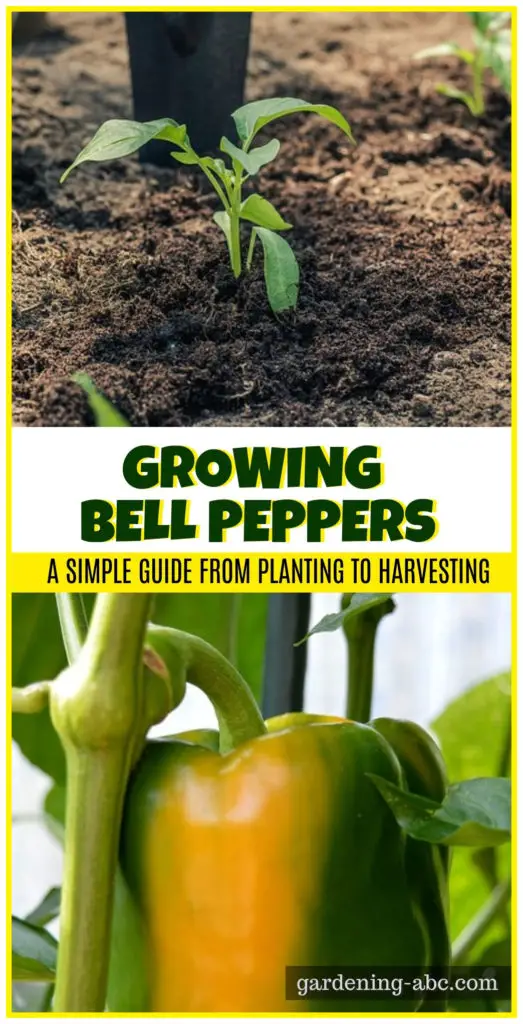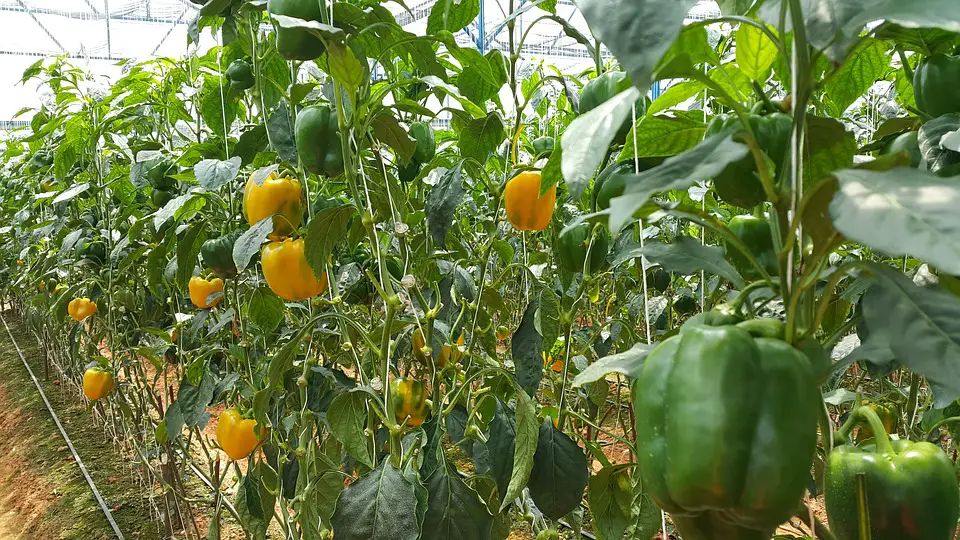We use affiliate links to run our site. When you buy through links on our site, we may earn an affiliate commission, without any added cost to you. Learn more
Back to growing tips. Today’s edition is Bell Peppers. You can check the rest of the vegetables by exploring the site.
Bell peppers are a great vegetable to grow at home. They are relatively easy to care for and you can grow them in a variety of climates. With a little bit of knowledge, anyone can successfully grow bell peppers at home even if you don’t have a lot of space.
Here in this post, we will give you some basic information on how to grow bell peppers, including what type of soil and climate is best, how to water and fertilize, and when to harvest. By following these simple tips, you can enjoy fresh, homegrown bell peppers in no time!
They also grow well in raised beds, and containers.
How To Grow Bell Peppers?
The sweet varieties of peppers, especially bell peppers, are one of the most popular varieties among gardeners. You can eat them green or ripe and can use them in salads, stuffing, soup, stews, relishes, and pickling.

Peppers grow very quickly. Depending on their variety they can become mature within 60 to 150 days (after transplanting). If you are a beginner, use the early varieties for growing.
Where To Grow Bell Peppers:
Choose a spot in your garden that gets plenty of sunlight. Bell peppers need at least six hours of sunlight every day to thrive. Also, the soil should be well-drained, peppers don’t like to sit in wet soil.
If you’re limited in space, consider using grow bags. You can usually find these at your local nursery or home improvement store.
Planting Pepper Seeds:
Once you’ve selected the perfect spot, it’s time to get your hands dirty. Though you can directly put the seeds in the garden, we strongly recommend that you first grow the seedlings indoors.
Bell peppers need a bit long growing season (60 to 90 days), so it’s best to get them started indoors. Plant seeds at about 1/4 inches deep in the soil, in late winter, 8-10 weeks before your last spring frost date.
For germinating the seeds the soil temperature should be above 70 deg F. If the temperature is not that high you can use heat pads for helping germination.
When To Plant Bell Peppers:
Bell peppers can’t be planted until the last frost has passed and the soil has warmed. In most cases, it’s best to wait until late spring to plant bell peppers.
If you start your own pepper plants from seed, you’ll need to transplant them into the garden after they’ve grown several inches tall and have developed a good root system.
Once your bell peppers are in the ground, they’ll need plenty of sunlight and warmth to grow well. If you live in an area with cool evenings, you may want to consider using black plastic mulch to help keep the soil warm and promote better growth.
How To Plant Bell Peppers:
In about 2-8 weeks the seeds will grow into proper transplants. Now plant them in the garden where you intended to grow pepper.
Before planting the seedlings in the ground you have to “harden off” the plants by placing them in a sunny spot for a few hours each day. After a week or so, they should be ready to plant in the garden.
Gently lift the plants from their pots, making sure you don’t damage the roots.
Give a 12 to 15 inches gap between two plants.
The Best Soil For Growing Peppers:
You can grow bell peppers in almost any type of soil, but make sure it is well-drained. If you are planning to grow bell peppers on clay soil, add some good quality compost, and coir or peat moss to increase the drainage of the soil.
There are many ways to improve the quality of your garden soil follow them to suit your needs.
They are not very hungry plants. Adding a handful of compost is enough for the plant to grow.
While using compost ingredients, make sure you don’t use a high amount of Nitrogen in the pile. This can result in lush foliage and lesser fruits.
How to water A Bell Pepper Plant:
Watering is very important in plants like pepper. They require a good amount of water but make sure the soil has proper drainage and the roots don’t get waterlogged. One of the solutions you can use is to add Perlite to the soil.
Companion Planting With Bell Pepper:
Pepper is a very good companion plant that goes well with plants like Tomatoes, Carrots, and Basils.
It is essential that you provide some form of support to the plant. Once the plant starts growing fruits it becomes tough for the plant to strive without support.
Pest Management of Bell Pepper:
Pepper is usually pest free. In rare cases spider mites or aphids attacks peppers. You can easily handpick and remove them.
Harvesting Bell Peppers:
Don’t wait for the peppers to fully mature before picking. Most of the peppers taste best when picked a little early. Also, regular harvesting of pepper increases the yield. Use a sharp knife to cut the fruit from the plant.
It is best to eat peppers the same day you have harvested them. You can also use a refrigerator to store them. Get more on vegetable storage in our earlier article.

Can I start bell peppers from seeds?
Yes, you can start bell peppers from seeds. However, many home gardeners prefer to buy starter pepper plants at garden nurseries for a shorter growing season.
When should I start pepper seeds indoors?
Start pepper seeds indoors about 8 to 10 weeks before your last spring frost date.
How deep should I plant pepper seeds?
Plant pepper seeds about 1/4 of an inch deep in pots filled with potting mix.
How much sun do bell peppers need?
Bell peppers require full sun exposure, ideally at least 6 to 8 hours of direct sunlight per day.
What is the ideal soil pH for growing bell peppers?
Bell peppers prefer slightly acidic to neutral soil pH.
How often should I water bell pepper plants?
Water bell pepper plants regularly, providing about 1 to 2 inches of water per week. Allow the soil to almost dry out between waterings.
When and how should I harvest bell peppers?
Harvest bell peppers once they have reached their full size and color. Use a sharp knife or scissors to cut the peppers clean off the plant.
How should I store bell peppers after harvesting?
Bell peppers can be refrigerated in plastic bags for up to 10 days. They can also be frozen or dried for longer storage.
Can bell pepper plants produce more than one harvest per season?
Bell pepper plants can continue to produce more flowers and peppers throughout the growing season if properly cared for. Regular harvesting encourages more fruit production.
Amazon and the Amazon logo are trademarks of Amazon.com, Inc, or its affiliates.

Hello, my peppers are too small, it seems that they never grow more than 5cm. Is this normal? They also get eaten alot. And what do you mean by support? With what?